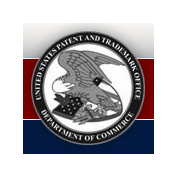
In the not too distant past, a person or company unhappy about a patent had two choices: (a) wait to be sued for patent infringement by the patent owner in Federal court and then challenge the validity of the patent, or (b) preemptively sue the patent owner in Federal Court and ask the court to declare the patent invalid. Litigation in Federal court was, and is, time consuming and massively expensive for all involved.
Then the law changed. Congress set up procedures to challenge a patent administratively before the USPTO that cost much less than Federal litigation. The administrative challenges effectively transferred the burden of determining the validity of patents from Federal judges to the USPTO and have come to dominate current patent infringement practice. There are three* administrative challenges to a patent:
Inter partes review (IPR) is limited in scope to whether the patented invention is novel and un-obvious based on prior art patents or printed publications. The challenger can petition the USPTO for inter partes review up to one year after the patent owner sues the challenger for patent infringement. Inter partes review has become a standard tool used by challengers against claims of patent infringement. The risk for the challenger is that the challenger is bound by the result.
Ex parte reexamination is another option. Either the challenger or the patent owner (or anyone else) can petition for ex parte reexamination based on prior art patents and publications. The challenger’s involvement stops after the petition. Ex parte review is even cheaper than IPR for the challenger because it has no role after submitting the petition. Unlike IPR, ex parte review is NOT binding on the challenger in Federal court. However, the patent may be strengthened because the patent owner can amend the claims to meet the prior art.
Post-grant review (PGR) allows a challenge to the patent for any reason and is not limited to prior art. For example, the challenger can argue that the patent addresses non-patentable subject matter, like a natural law or abstract idea. Post-grant review is often not available because the challenger must file the petition within nine months from the date the patent issued. The challenger is bound by the result in infringement litigation.
Finally, the challenger may elect not to pursue IPR, PGR or even ex parte reexamination and may present its challenge to the validity of the patent directly in Federal court, with all of the expense that entails. Administrative challenges to issued patents are now a fact of life for patent owners. The costs are down, but the risks are up.
*Actually, there are four. The fourth challenge is limited to business method patents and ends in September 2020.
— Robert Yarbrough, Esq.

